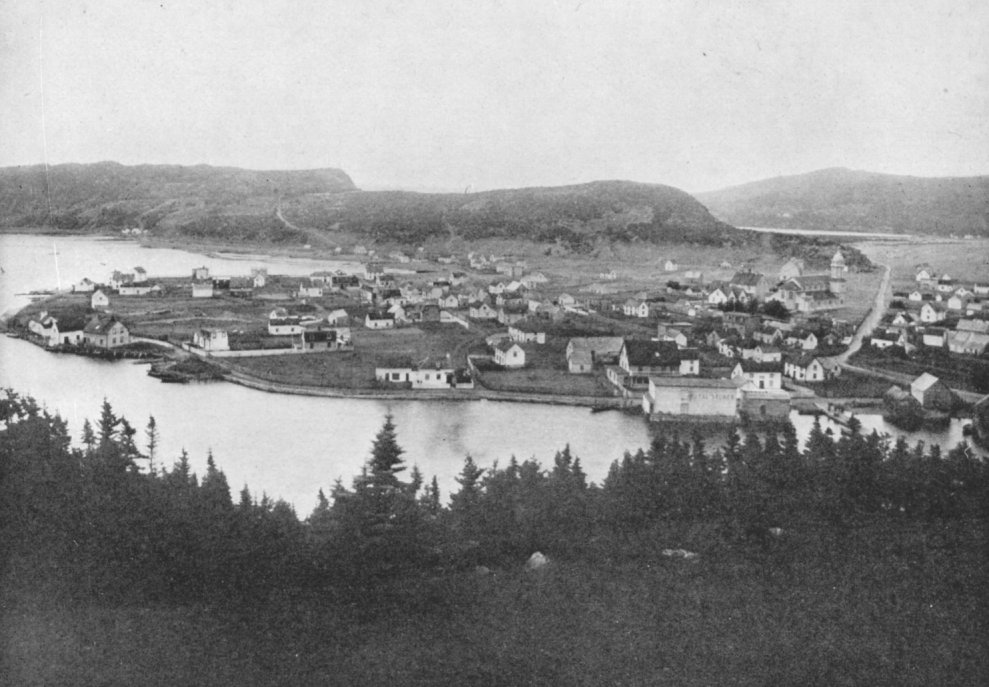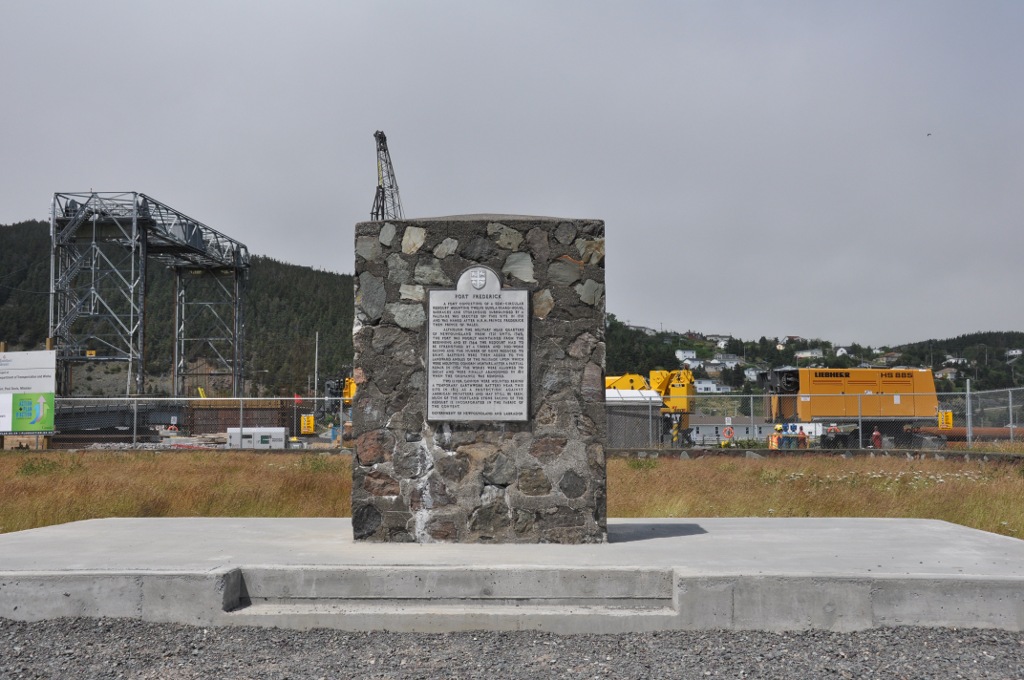|
Samuel Gledhill (Governor)
Samuel Gledhill (7 April 1677 - 1735 or 1736) was the lieutenant-governor of Placentia, Newfoundland from 1719-c.1730. He was born at Horbury, near Wakefieid, Yorkshire, the youngest of the 13 children of Robert Gledhill, a cloth-dresser and educated at Wakefield Grammar School. He joined the navy but was kidnapped in Spain to be sold as a slave in the West Indies. After gaining his freedom he made his way to Spain and was commissioned a lieutenant in 1702 and promoted to lieutenant-colonel in 1707. He served in England and in the Low Countries, was wounded and taken prisoner at the Siege of Douai and subsequently freed in a prisoner exchange. In 1710 he lost a bid to be elected to Parliament for Carlisle and hotly contested the result to no avail. In 1712 he was made lieutenant-governor of Carlisle, with the rank of captain, in what later became the 11th (North Devonshire) Regiment of Foot. That same year he was the subject of affiliation proceedings in London's Westminster ... [...More Info...] [...Related Items...] OR: [Wikipedia] [Google] [Baidu] |
Placentia, Newfoundland And Labrador
Placentia is a town located in the Canadian province of Newfoundland and Labrador. It consists of the Argentia Industrial Park and amalgamated communities of Townside, Freshwater, Dunville, Southeast, Point Verde and Jerseyside. History There is considerable evidence that Placentia Bay was intermittently occupied by Little Passage people.I. Marshall, ''A History and Ethnography of the Beothuk'' (Montréal: McGill-Queens University Press, 2014): 273. Their descendants, the Beothuk, continued to settle there until the 17th century. Remnants of Beothuk occupation from the surrounding area has been carbon dated back to as far as 1500 CE. Whether the Beothuk had come to permanently settle or just to fish has proved difficult to ascertain. By the late 17th century, the English and French settlers and fishermen had claimed the bays of Placentia.Newfoundland and Labrador Heritage Web Site, accessed March 5, 2019Disappearance of the Beothuk/ref> This effectively cut the natives off f ... [...More Info...] [...Related Items...] OR: [Wikipedia] [Google] [Baidu] |
Wakefield Grammar School
Queen Elizabeth Grammar School (QEGS) is an independent, public school for boys in Wakefield, West Yorkshire, England. The school was founded by Royal Charter of Queen Elizabeth I in 1591 at the request of leading citizens in Wakefield (headed by Thomas Savile and his two sons) 75 in total and some of whom formed the first governing body. The school is part of a foundation, with both QEGS Senior and Junior schools joined together, along with the nearby Wakefield Girls' High School and its Junior School, and Mulberry House, which is a nursery and pre-prep department. As of September 2021, the headmaster of the school is Dr Richard Brookes, who was previously senior deputy head at City of London School. QEGS is a member of the Headmasters' and Headmistresses' Conference. Some notable former pupils include the 17th century English physician, John Radcliffe, Joseph Moxon, mathematician and hydrographer to King Charles II, Richard Henry Lee, signer of the United States Declar ... [...More Info...] [...Related Items...] OR: [Wikipedia] [Google] [Baidu] |
Carlisle (UK Parliament Constituency)
Carlisle is a constituency in Cumbria represented in the House of Commons of the UK Parliament since 2010 by John Stevenson of the Conservative Party. History Carlisle has existed as a seat since the Model Parliament in 1295. It was represented by Labour Party MPs from 1964 to 2010, although the Conservative candidate came within 2% of taking the seat in 1983–1987, and has been held by John Stevenson of the Conservative Party since the 2010 general election. Boundaries 1918–1955: The County Borough of Carlisle. 1955–1983: As 1918 but with redrawn boundaries. 1983–1997: The City of Carlisle wards of Belah, Belle Vue, Botcherby, Currock, Denton Holme, Harraby, Morton, St Aidan's, Stanwix Urban, Trinity, Upperby, and Yewdale. 1997–2010: The City of Carlisle wards of Belah, Belle Vue, Botcherby, Burgh, Currock, Dalston, Denton Holme, Harraby, Morton, St Aidan's, St Cuthbert Without, Stanwix Urban, Trinity, Upperby, and Yewdale. 2010–present: The City of C ... [...More Info...] [...Related Items...] OR: [Wikipedia] [Google] [Baidu] |
11th (North Devonshire) Regiment Of Foot
11 (eleven) is the natural number following 10 and preceding 12. It is the first repdigit. In English, it is the smallest positive integer whose name has three syllables. Name "Eleven" derives from the Old English ', which is first attested in Bede's late 9th-century ''Ecclesiastical History of the English People''. It has cognates in every Germanic language (for example, German ), whose Proto-Germanic ancestor has been reconstructed as , from the prefix (adjectival " one") and suffix , of uncertain meaning. It is sometimes compared with the Lithuanian ', though ' is used as the suffix for all numbers from 11 to 19 (analogously to "-teen"). The Old English form has closer cognates in Old Frisian, Saxon, and Norse, whose ancestor has been reconstructed as . This was formerly thought to be derived from Proto-Germanic (" ten"); it is now sometimes connected with or ("left; remaining"), with the implicit meaning that "one is left" after counting to ten.''Oxford English Di ... [...More Info...] [...Related Items...] OR: [Wikipedia] [Google] [Baidu] |
Castle Hill, Newfoundland And Labrador
Castle Hill is an area containing the remains of both French and British fortifications, overlooking the town of Placentia (French: ''Plaisance'') in Newfoundland and Labrador, Canada. The site was originally established in order to protect the French fishing interests in Newfoundland and the approaches to the French colony of Canada. King William's War In order to protect the bay, there was one fort erected, Fort Plaisance (1662) (also known as Vieux Fort) between 1662 and 1690. During King William's War, on 25 February 1690, 45 British freebooters from Ferryland led by Herman Williamson attacked Plaisance by land. After killing two soldiers and wounding governor Louis de Pastour de Costebelle, they took possession of the town and destroyed the fort. The population was imprisoned in the church for six weeks, until the English left on 5 April with the colony's supplies. The French replaced former Fort Plaisance with Fort Saint-Louis (1691), with 50 French soldiers. In ... [...More Info...] [...Related Items...] OR: [Wikipedia] [Google] [Baidu] |
List Of Lieutenant Governors Of Newfoundland And Labrador
The following is a list of the governors, commodore-governors, and lieutenant governors of Newfoundland and Labrador. Though the present day office of the lieutenant governor in Newfoundland and Labrador came into being only upon the province's entry into Canadian Confederation in 1949, the post is a continuation from the first governorship of Newfoundland in 1610. Proprietary governors of Newfoundland, 1610–1728 Governors of Plaisance, 1655–1713 Lieutenant-governors of Placentia, 1713–1770 Commodore-governors of Newfoundland, 1729–1825 The Commodore-Governor was a British Royal Navy official who was commander of the annual fishing convoy which left England each spring to fish off Newfoundland and was charged with protecting the convoys from harm. He was also responsible for various administrative and judicial functions, including assisting the fishing admirals in maintaining law and order and compiling the annual report on the fishery for the English government. ... [...More Info...] [...Related Items...] OR: [Wikipedia] [Google] [Baidu] |
1677 Births
Events January–March * January 1 – Jean Racine's tragedy '' Phèdre'' is first performed, in Paris. * January 21 – The first medical publication in America (a pamphlet on smallpox) is produced in Boston. * February 15 – Four members of the English House of Lords embarrass King Charles II at the opening of the latest session of the " Cavalier Parliament" by proclaiming that the session is not legitimate because it hadn't met in more than a year. The Duke of Buckingham, backed by Lord Shaftesbury, Lord Salisbury and Baron Wharton, makes an unsuccessful motion to end the session. When the four Lords refuse to apologize, they are arrested and imprisoned in the Tower of London. * February 26 – ** The first arrests are made in the case that will develop into the " Affair of the Poisons" in France, as Magdelaine de La Grange and her accused accomplice, Father Nail, are detained on suspicion of poisoning her lover, a Messr. Faurie. While in p ... [...More Info...] [...Related Items...] OR: [Wikipedia] [Google] [Baidu] |
1730s Deaths
Year 173 ( CLXXIII) was a common year starting on Thursday (link will display the full calendar) of the Julian calendar. At the time, it was known as the Year of the Consulship of Severus and Pompeianus (or, less frequently, year 926 ''Ab urbe condita''). The denomination 173 for this year has been used since the early medieval period, when the Anno Domini calendar era became the prevalent method in Europe for naming years. Events By place Roman Empire * Gnaeus Claudius Severus and Tiberius Claudius Pompeianus become Roman Consuls. * Given control of the Eastern Empire, Avidius Cassius, the governor of Syria, crushes an insurrection of shepherds known as the Boukoloi. Births * Maximinus Thrax ("the Thracian"), Roman emperor (d. 238) * Mi Heng, Chinese writer and musician (d. 198) Deaths * Donatus of Muenstereifel, Roman soldier and martyr A martyr (, ''mártys'', "witness", or , ''marturia'', stem , ''martyr-'') is someone who suffers persecution and death f ... [...More Info...] [...Related Items...] OR: [Wikipedia] [Google] [Baidu] |




